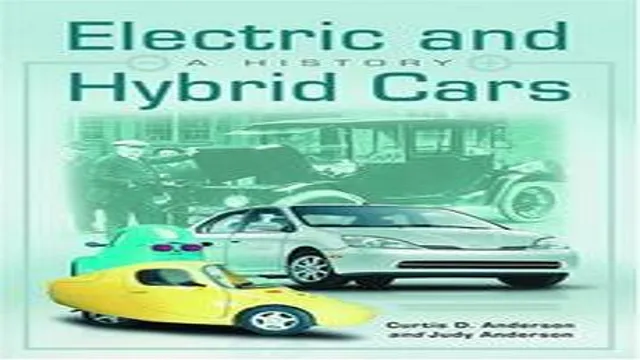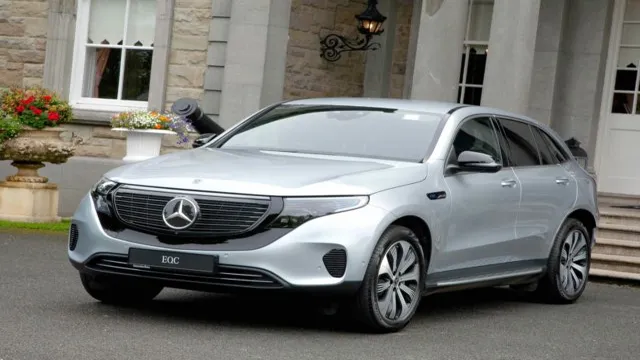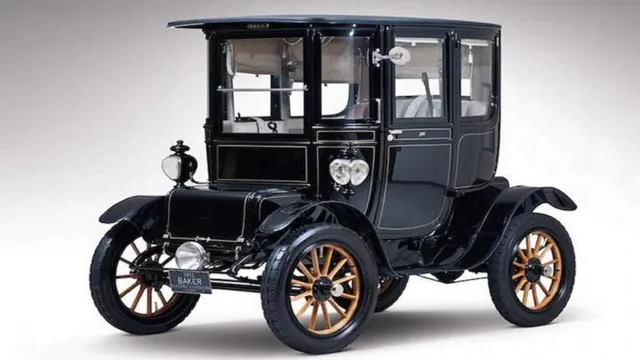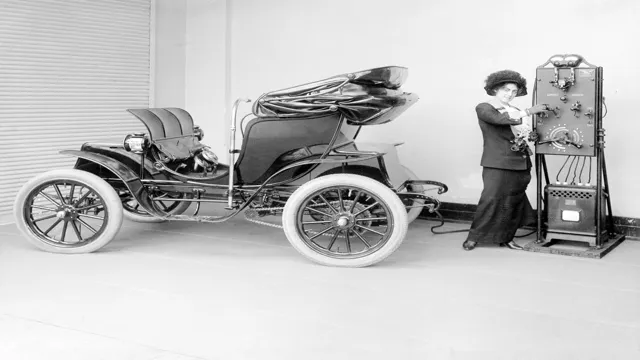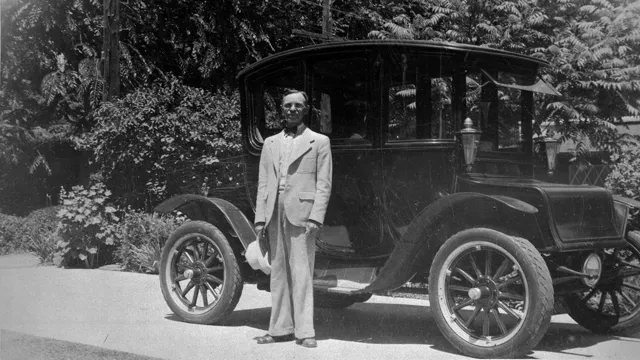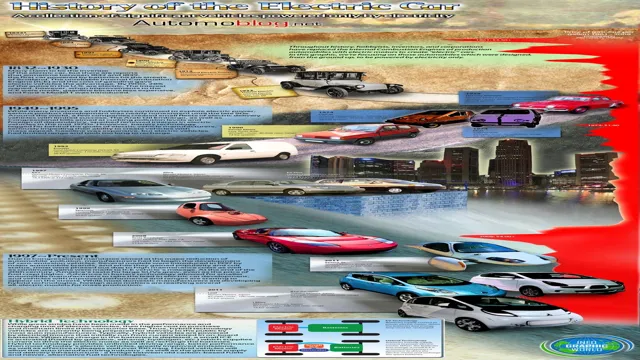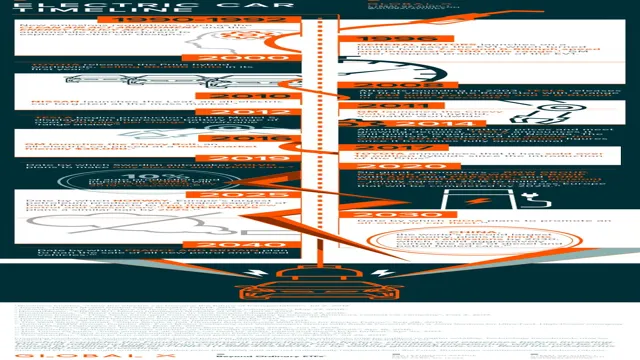Revolution on Wheels: Exploring the Rich History of Electric and Hybrid Cars with Judy Anderson’s Latest Edition
Have you ever wondered how the electric and hybrid cars we see on the roads today came to be? It’s an interesting history that dates back over a century. Luckily, Judy Anderson has compiled all of the fascinating information into her book, “Electric and Hybrid Cars: A History 2nd Edition.” This book covers everything from the early experiments with electric cars in the 1800s to the current state of the industry.
Anderson takes a deep dive into the key players and their contributions, such as Thomas Davenport, who built the first electric motor for a car, and Ferdinand Porsche, who created the first hybrid design. One of the most interesting parts of the book is the discussion of the rise and fall of electric cars in the early 1900s. It turns out that electric cars were actually quite popular in the early 1900s, but the invention of the gas-powered engine and the discovery of large reserves of petroleum in the United States quickly shifted the industry towards fossil fuels.
But with concerns over climate change and a push towards sustainability, electric and hybrid cars are once again gaining popularity. Anderson’s book is a must-read for anyone interested in the history of these unique vehicles and the people behind them.
Introduction
Electric and hybrid cars have come a long way since their inception. In the 2nd edition of “Electric and Hybrid Cars: A History” by Judy Anderson, we see the evolution of these vehicles and how they’ve become more accessible and advanced over time. While the history of electric and hybrid vehicles begins as far back as the 1800s, it wasn’t until the late 1990s and early 2000s that they hit the mainstream market.
Today, hybrid and electric vehicles have become increasingly popular due to their low emissions and fuel efficiency. Consumers are more environmentally conscious than ever before, and the availability of these vehicles has made it easier for them to make a difference. With advancements in technology and infrastructure, it’s likely we’ll see more electric and hybrid vehicles on the road in the years to come.
The book by Anderson provides an in-depth look at the history of these vehicles and how they’ve impacted the automotive industry and the environment.
The Early Days of Electric Cars
As we look back at the early days of electric cars, we can see how much progress has been made in recent years. While electric cars may seem like a new invention, they actually date all the way back to the late 1800s, with the first electric vehicle hitting the streets of New York City in 189 At the time, electric cars were seen as a promising alternative to the noisy and polluting gasoline engines that were dominating the market.
However, despite their early success, electric cars were ultimately overshadowed by the convenience and range of gasoline-powered vehicles. It wasn’t until decades later that electric cars would make a comeback, but with advancements in battery technology and electric charging infrastructure, they are now on a path towards becoming the future of transportation.
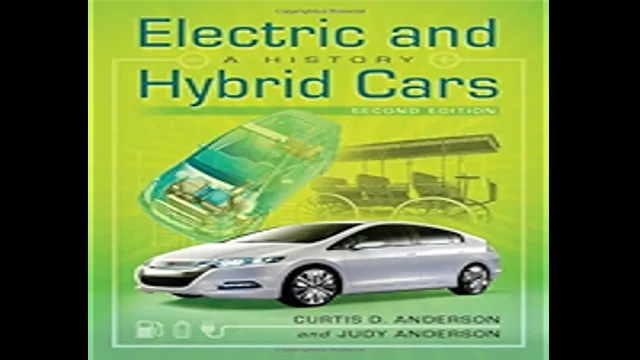
Emergence of Hybrid Cars
The emergence of hybrid cars is a significant development in the automotive industry. With increasing concerns about environmental issues and the need to reduce dependence on fossil fuels, hybrid cars have become a popular choice for many consumers. Hybrid cars combine the benefits of both gasoline and electric cars, offering better fuel efficiency and lower emissions.
The technology behind these cars has evolved rapidly, making them more affordable and convenient to use. The rise of hybrid cars has also fostered innovation in the industry, with many major car manufacturers investing heavily in research and development to improve existing models and create new ones. Overall, the emergence of hybrid cars has sparked a revolution in the way we think about transportation and energy consumption.
The Evolution of Electric and Hybrid Cars
Electric and hybrid cars have come a long way since their inception. In the early days, electric cars were seen as a novelty, with limited range and high cost being the major factors inhibiting their appeal. Hybrid cars, on the other hand, were seen as a more practical option, with their ability to switch between gasoline and electric power offering the benefits of both worlds.
However, over time, electric cars have evolved to become more appealing to the average driver. With advances in battery technology, range anxiety has become less of an issue, and pricing has become more competitive. The popularity of electric cars has also led to increased investment in charging infrastructure, which has further contributed to their appeal.
In contrast, hybrid cars have become more niche, with their advantage of having longer range overshadowed by the competition from electric cars. Overall, the evolution of electric and hybrid cars has been marked by both challenges and opportunities, with each type of car continuing to evolve to meet the demands and preferences of modern drivers. If you’re interested in learning more, be sure to check out “Electric and Hybrid Cars: A History” by Judy Anderson, which provides a comprehensive overview of this fascinating topic.
Breakthroughs and Advances in Technology
Electric and hybrid cars have come a long way since their early beginnings over a decade ago. Since then, there have been continuous breakthroughs and advances in technology that have transformed the automobile industry. With a focus on sustainability and eco-friendliness, auto manufacturers have developed innovative solutions to reduce the emissions generated by cars.
Electric cars run solely on electricity, whereas hybrid cars combine a traditional combustion engine with an electric motor. Both have proven to be effective ways of reducing harmful emissions and saving fuel costs. As technology has advanced, electric cars have become more affordable and seen improvements in battery life and range.
The transition towards electric and hybrid cars is inevitable, and the future looks promising, with more automakers investing heavily in sustainable vehicle options.
Government Incentives for Electric and Hybrid Cars
The popularity of electric and hybrid cars has taken the automotive industry by storm. As the demand for cleaner and more fuel-efficient vehicles increases, so do the government incentives that encourage their adoption. These incentives are designed to not only reduce the environmental impact of cars but also to save drivers money through tax credits and rebates.
In recent years, electric and hybrid cars have gone through significant developments, allowing them to travel longer distances on a single charge and match the performance of traditional gasoline-powered cars. With technological advancements and increasing affordability, electric and hybrid cars are becoming a more feasible option for drivers looking to make a change. As a result, more and more governments around the world are offering incentives for consumers who choose to drive electric and hybrid vehicles.
These incentives range from tax credits, reduced registration fees, toll discounts, and free parking, making owning and operating an electric or hybrid car more accessible and practical. The incentives help to promote a sustainable future and make it easier for people to adopt a more eco-friendly lifestyle.
Impact on the Automotive Industry and Market
Electric and hybrid cars have experienced a significant evolution over recent years, changing the face of the automotive industry. These vehicles have become increasingly popular among environmentally conscious consumers, resulting in the emergence of new players in the market and prompting established manufacturers to invest in research and design. The growing demand for electric and hybrid cars has impacted the market, with many traditional car manufacturers having to adapt in order to remain competitive.
As a result, we have seen a rise in the number of electric and hybrid cars being produced, and a shift towards more sustainable and eco-friendly solutions. The evolution of electric and hybrid cars has the potential to significantly reduce carbon emissions, making them a crucial step towards a more sustainable future.
Beyond Cars: Other Uses of Electric and Hybrid Technology
Electric and hybrid cars have come a long way since their introduction in the early 2000s. However, their technological advancements and efficiency have made them more than just means of transportation. Today, electric and hybrid technology is being utilized for a variety of purposes, from powering homes and businesses to aiding emergency response efforts.
In fact, electric and hybrid cars have given rise to “Vehicle-to-Grid” (V2G) systems, which allow energy stored in electric car batteries to be used to power homes during blackouts or high-demand periods. Additionally, electric and hybrid technology is being used to power public transportation systems, such as buses, making them more eco-friendly and cost-effective. Another interesting application of electric and hybrid technology is in emergency response vehicles, such as firetrucks and ambulances.
Their silent operation and efficient use of energy make them ideal for emergency situations. As electric and hybrid technology continues to advance, we can expect to see more innovative uses beyond just cars.
Electric Buses and Public Transportation
Electric buses are a promising technology for revolutionizing the world of public transportation. They offer several advantages over traditional fossil-fuel buses, including reduced emissions, lower running costs, and quieter operation. Additionally, electric buses have the potential to provide more reliable and efficient service, which could help to encourage more people to use public transportation.
However, there are also some challenges to the widespread adoption of electric buses. One major obstacle is the high initial cost of purchasing and installing the necessary charging infrastructure. Another is the limited range of current electric buses, which can make it difficult to operate them on longer routes.
Despite these challenges, electric buses have already proven to be successful in many cities around the world, and they are likely to become an increasingly important part of the public transportation landscape in the years to come.
Electric Motorcycles and Bicycles
Electric motorcycles and bicycles are growing in popularity as people become more conscious about environmental conservation. These vehicles are powered by hybrid or electric motors, eliminating the need for gasoline or diesel fuel. Unlike traditional motorcycles, electric ones produce no harmful emissions.
Electric bicycles, on the other hand, require pedaling, but the motor provides additional assistance, making cycling less strenuous. They’re ideal for commuting in urban areas, reducing traffic congestion and carbon emissions. Riding an electric motorcycle or bicycle is a thrilling experience that’s both eco-friendly and cost-effective.
These vehicles are cheaper to operate and maintain than those fueled by gasoline or diesel. They’re also quieter, making them ideal for early morning rides without disturbing the peace. Some models come with rechargeable batteries that can cover long distances with little to no environmental impact, allowing riders to explore the outdoors without the worry of pollution.
In conclusion, hybrid and electric technology isn’t only for cars. Bicycles and motorcycles can also benefit from this technology, providing a green and efficient form of transportation. As electric and hybrid technology continues to evolve, we can expect more innovative and sustainable vehicles to hit the market.
So, whether you’re looking to cut down on fuel costs, reduce your carbon footprint, or just enjoy an exciting ride, consider investing in an electric motorcycle or bicycle.
Conclusion and Future Outlook
In conclusion, the history of electric and hybrid cars is a story of innovation, skepticism, and perseverance. From the early experiments of inventors like Thomas Davenport and Robert Anderson to the modern-day success of companies like Tesla and Toyota, the electric and hybrid car industry has come a long way in the past two centuries. While some may still doubt the viability of these vehicles, it is abundantly clear that they are here to stay.
And who knows, maybe one day we’ll all be driving electric cars that not only save us money on gas but also make us look like stylish space travelers. One thing is for sure: the future is electric, and it’s shaping up to be a bright one.”
FAQs
What is the history of electric and hybrid cars?
Electric and hybrid cars have a long history, dating back to the early 1800s when electric vehicles were first invented. However, they didn’t become popular until the late 1990s and early 2000s when consumers started to become more conscious of environmental concerns and fuel costs.
What is the difference between electric and hybrid cars?
Electric cars run solely on electricity and need to be charged via an external source such as a charging station. Hybrid cars, on the other hand, use both electricity and gasoline to power the vehicle, and the system switches between the two modes based on the driving conditions.
What are the benefits of owning an electric or hybrid car?
There are many benefits to owning an electric or hybrid car, including lower emissions, reduced fuel costs, and increased energy efficiency. Additionally, electric cars require less maintenance than traditional gasoline cars and have a longer lifespan.
What is the range of an electric car?
The range of an electric car varies greatly depending on the make and model of the vehicle. Generally, most electric vehicles can travel between 100 and 400 miles on a single charge, but this can vary depending on driving conditions, battery capacity, and other factors.

